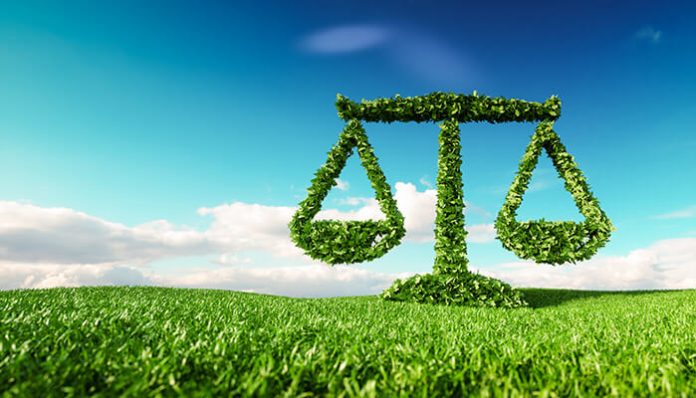This article is written by Pratap Alexander Muthalaly, from Government Law College, Trivandrum. This article addresses the scope of environmental law and the roles and responsibilities of an environmental lawyer.
Table of Contents
Introduction
With the growing public awareness of the importance of the environment and environmentally friendly procedures, the discipline of environmental law has emerged as a key area of study in the legal field. This has opened up a new realm of possibility for upcoming lawyers and law aspirants, owing to the increasing need for stringent rules and procedures that regulate, mitigate and plan for the effective regulation of natural resources as well as everyday interactions with our environment.
What is environmental law
Environmental law consists of a wide variety of legislation, enactments, and provisions that are chiefly concerned with the regulation of human activity concerning our natural environment and its various interconnected ecosystems. While everything that is encompassed in environmental law may not directly intersect with each other, they all act as safeguards in preventing environmental damage and ensuring effective management of the environment and its multiple ecosystems.
Importance of environmental law
Environmental law and legislation are central in protecting us humans as well as the different plants and animals in the greater ecosystem that we exist in. Environmental law ensures that individuals, governments and cooperates do not cause harm to the environment or its ecosystems. It is central in setting up, regulating, and interpreting the various conventions and laws that have been initiated by various countries and international organisations across the world, to prevent transgressions that pose a threat to the environment and by extension the human race as a whole.
Constituents of environmental law
Environmental law addresses a wide variety of different areas. Listed here are some of the most central areas that are governed by environmental law and its principles.
Reducing air pollution and maintaining air quality
This refers to the measures adopted to maintain safe air standards. That is, enforcing rules and regulations after determining what is the safe level of emission in terms of motor vehicles, industrial emissions and common everyday usages. The most common example of these is the emission tests and regular cyclic vehicle safety tests.
Water Quality
Water quality laws are primarily concerned with the release of pollutants into the various water bodies. Across nations, water quality laws list the various pollutants that must be treated before they are released into water bodies and also the substances that have to be chemically altered and rendered inert before disposal. Some of these include raw sewage, agricultural waste, industrial waste and also the liquid waste from construction sites.
Waste management
Waste management laws regulate the transport, treatment, storage, and disposal of all manner of waste, this includes solid municipal waste, hazardous waste, and nuclear waste, among others. In general, waste laws are designed to minimize or regulate the uncontrolled dispersal of waste materials into the environment. That is, minimizing ecological or biological harm. This is ensured by categorizing waste types and properly dictating the transport, treatment, storage, and disposal of waste.
Containment cleanup, damage mitigation
While preventing future damage to the environment is undeniably the primary objective of environmental law, mitigating and reducing existing damage is also important. This area most often deals with issues like toxic leaks and oil spills. The central objective of this branch of environmental law is deciding liability, planning an appropriate response, and also determining the best process of investigation and monitoring in the overall clean up process. This area also concerns itself with the study and assessment of risk in the long term, to better mitigate any future accidents and risks.
Chemical safety
The safe use of chemicals also falls under the ambit of environmental law. It primarily concerns itself with the correct storage of chemicals, their use, use of appropriate safety equipment, and also ensuring the legitimate licensing and sale of the various chemicals. All of this is with the eventual goal of preventing environmental threats that may arise due to poor management. This form of law is relevant to a wide variety of disciplines, ranging from repair garages to sophisticated testing labs.
Sustainability of resources
In recent years the UN has put great emphasis on ensuring the sustainability of resources. To properly facilitate this vision, it has advocated the formation of various legal principles and legislation. Central to this vision is the concept of environmental impact assessment.
Environmental impact assessment (EA) is the assessment of the possible consequences both negative and positive of a particular plan, policy or program, on the environment before the actual decision being carried out. It is a key tool of environmental management. The central purpose of EA is to ensure that decision-makers consider the environmental impacts when deciding whether or not to proceed with a proposed project.
Other common forms of legislation include the limiting of human activities. This includes the prevention of overfishing, deforestation and excessive mining.
Notable laws and legislations in environmental law
Here are some of the most notable international environmental laws passed in recent times.
- Ramsar convention (1971)
This convention was initiated to push for greater conservation and sustainable use of wetlands.
- Stockholm Conference (1972)
It was the first major environmental conference and set the framework for discussions on the environment and the need for some form of regulation. The Stockholm declaration along with its 26 principles was formulated at this conference. This conference also marked the creation of the United Nations Environment Programme.
- Vienna convention
This convention was established to ensure that more steps were taken to preserve and protect the ozone layer.
- Kyoto protocol
This protocol is based on the idea of common but differentiated responsibilities. It placed higher responsibility on the developed countries to reduce emissions as they bore primary responsibility for the higher levels of emissions.
Here are some notable environmental laws in India-
- The Air Prevention and Control of Pollution Act, 1981
The Air (Prevention and Control of Pollution) Act, 1981 provides for the prevention, control, and reduction of air pollution. It also initiated the setting up of boards at the center and state level to properly implement this law.
- The Water Prevention and Control of Pollution Act, 1974
The Water Prevention and Control of Pollution Act, 1974 was enacted to provide a legal framework to prevent and control water pollution and to maintain or restore the water quality of the nation.
- The Environment Protection Act, 1986
The Environment Protection Act established the framework for studying, planning and implementing the long-term requirements of environmental safety and also played a major part in laying down a system of speedy and adequate response to situations threatening the environment. It is all-encompassing legislation that provides a proper framework for the two acts preceding it.
- The National Green Tribunal Act, 2010
It is through this act that the well-known national green tribunal was established (NGT)for the effective and speedy disposal of environment and forest protection cases in India. It is probably the most important piece of environmental legislation established in India in recent times.
- Hazardous waste legislation
Numerous different legislations regulate waste management. Most notable among them are the Factories Act, 1948, the Public Liability Insurance Act, 1991, the National Environment Tribunal Act, 1995, and the various rules and notifications under the Environmental Act. These have been further backed by the hazardous waste management rules of 2008 and also the municipal solid wastes rules of 2000.
Careers in environmental law
According to salaryexpert.com, the average environmental lawyer’s salary in India is ₹11,04,102 or an equivalent hourly rate of ₹531. In addition, they also earn an average bonus of ₹59,732. This salary estimate is based on salary survey data collected directly from employers and anonymous employees in India. In terms of an entry-level environmental lawyer, he/she (1-3 years of experience) earns an average salary of ₹7,80,139. On the other end, a senior level environmental lawyer (8+ years of experience) earns an average salary of ₹13,93,757. This of course may vary according to the specific field of practice and also the prevailing economic conditions and present-day demand in the job market.
Here are some of the different areas in which environmental lawyers are normally employed.
- Governments: Governments worldwide are under increased pressure to put in place necessary legislation and policy to address various environmental issues. This involves the enforcement of existing environmental laws as well as drafting new ones. Government jobs include semi-government institutions such as environmental authority and green tribunals.
- NGOs: Currently there are many NGOs and international organizations devoted to environmental conservation. Choosing to work for such organizations can be at both an international and domestic level. For example in India, one could work for an organization such as the world wildlife fund or instead opt for local NGOs such as the Mumbai-based Vanashakthi.
- International organizations: The most obvious choice here would be the UN and also more specifically the UNEP (United Nations Environment Programme). This, however, is not the only avenue, the secretariats of various environmental treaties also utilize lawyers. Some notable examples include the Secretariat of the Vienna Convention on the Protection of the Ozone layer, the UNFCCC secretariat (United Nations Convention on Climate Change), and the United Nations Convention to Combat Desertification (UNCCD).
- Consultant in environmental policy and law: This is mostly a career path for those who have more experience in the field and have already built up a working relationship with governments, academics or international organizations.
- Business and industry: Under the mounting pressure of environmental regulation, many businesses are on the lookout to hire lawyers well versed in environmental law. This is especially the case with companies in mining, energy, chemicals and other such sectors. These companies are likely to have numerous rules and provisions that they have to abide by and, therefore need legal assistance to navigate through the various legal intricacies and possible lawsuits that they face.
- Law firms: With the growing awareness on environmental issues and the increase in the number of court cases that are specific to the environment, many big law firms have set up departments to exclusively handle the environment and environmental law-related issues.
Skills required to be an environmental lawyer
To become an environmental lawyer one needs a law degree first and foremost. This along with an LLM and PHD specializing in environmental law would be helpful for lawyers seeking a higher pay grade or more advanced positions. To be successful as an environmental lawyer, one needs a versatile skill set. This includes effective research skills, being a skilled negotiator and also a reasonable degree of competence in court.
Normally a junior environmental lawyer has to analyse data from findings, cases and other sources. Also, they are expected to perform legal correspondence and other forms of documentation. Other than this they may be at times requested to make court appearances and also provide counsel to clients.
In addition to the skills listed above, Senior lawyers have some added responsibilities. They may often provide legal advice and support to researchers, scientists, and governmental and non-governmental agencies. Some environmental lawyers are also utilized to give expert witness testimonies in court. They also play the role of a peace broker between parties with conflicting interests (landowners and corporations or government agencies). We also often see environmental lawyers spearhead educational campaigns and lobbying efforts.
Despite all this, the most important requirement is a keen understanding of how the law works in practice at both the ground level as well as at a higher scale. That along with a good network of contacts in the area of environmental law and environment-related procedures is central to establishing oneself as a successful environment lawyer.
Conclusion
Given the increasing importance that the world community gives to the environment and its protection, there will be an increasing need for a stable legal framework to facilitate any potential growth or change. This, of course, means the establishment of more conventions, legislation, and rules in the sphere of environmental law. To facilitate this demand we will need more law professionals that are well versed in the intricacies of environmental law and the various rules and principles that it has been built on. As a result, environmental law will be a good area for up and coming lawyers to look into, especially in countries such as ours where the more traditional disciplines are fast filling up.
References
- https://www.environmentalscience.org/career/environmental-lawyer
- https://www.mondaq.com/canada/environmental-law/234218/so-you-want-to-be-an-environmental-lawyer
- https://www.salaryexpert.com/salary/job/environmental-lawyer/india
- https://uk.practicallaw.thomsonreuters.com/0-503-2029?transitionType=Default&contextData=(sc.Default)&firstPage=true
- https://guides.ll.georgetown.edu/c.php?g=273374&p=1824812
- https://www.britannica.com/topic/environmental-law
- https://www.ukela.org/UKELA/Networks/Students/Careers-in-environmental-Law/UKELA/Networks/Students/Careers-in-environmental-law.aspx?hkey=478f2911-e639-4a2d-a8fc-32a303f8eff4
LawSikho has created a telegram group for exchanging legal knowledge, referrals and various opportunities. You can click on this link and join:












